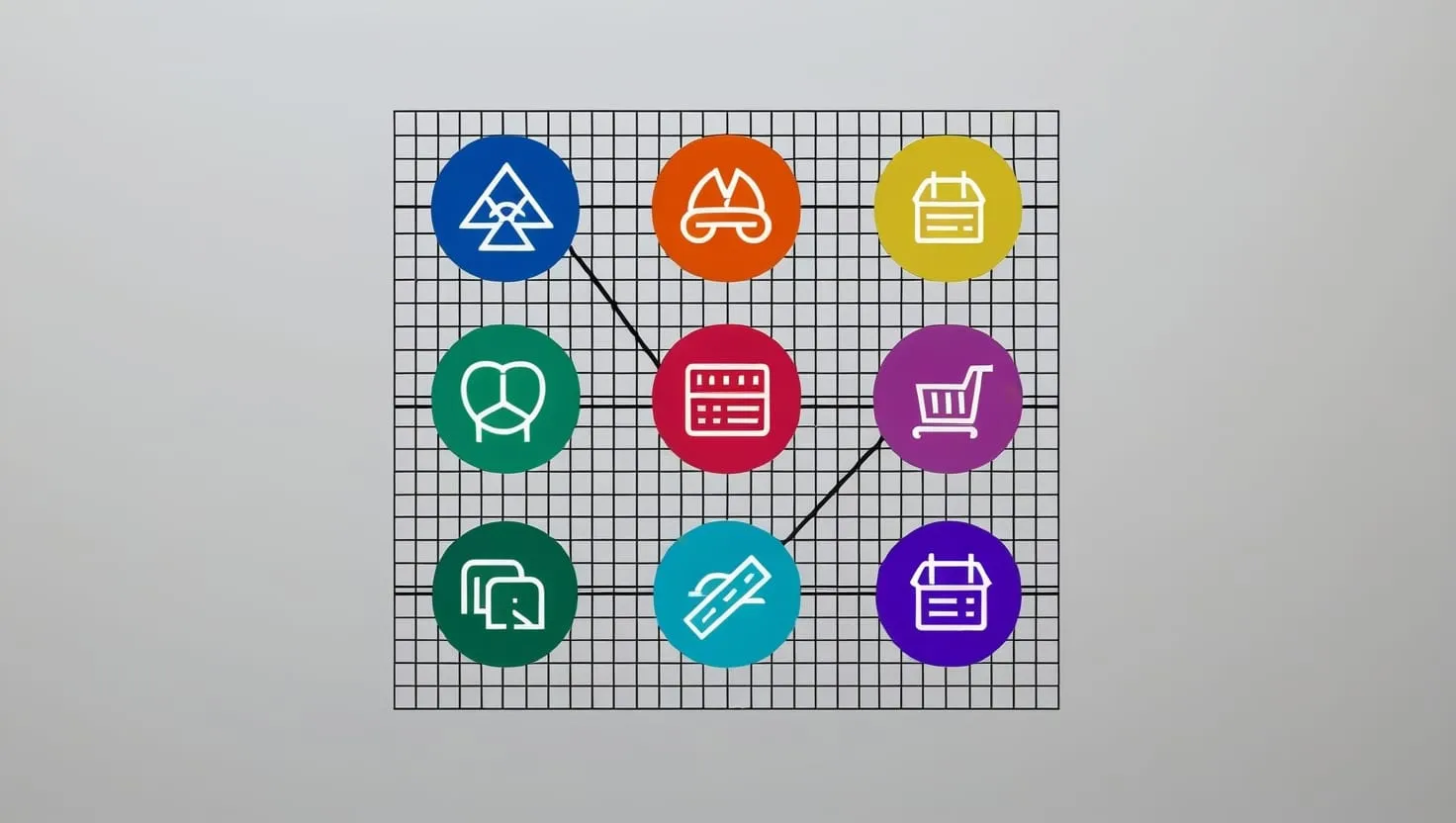Imagine being in a constant battle between saving and spending, feeling guilty about every purchase, and wondering where your money is really going. This is a dilemma many of us face, but what if there was a way to align your spending with your personal values and long-term goals? Meet Ananya, a young professional who stumbled upon the concept of a 'Mindful Spending Matrix,' a tool that transformed her relationship with money.
Ananya's journey began with a simple yet profound step: identifying her core values. She listed family, health, personal growth, and environmental sustainability as the principles that guide her life. These values are not just abstract concepts; they are the foundation upon which she makes her financial decisions.
To create her Mindful Spending Matrix, Ananya set up a simple grid. On one axis, she listed her expenses, and on the other, her core values. This matrix allowed her to plot each expense against her values, evaluating how each purchase aligned with what truly mattered to her. For instance, when she considered buying a designer bag, she realized it didn't align with any of her core values. However, the cooking classes she had been putting off ticked multiple boxes – health, personal growth, and even family time.
This matrix became Ananya's financial compass, helping her distinguish between meaningful purchases that brought lasting joy and impulsive buys that led to buyer's remorse. She started to feel more in control of her finances and less stressed about spending. The matrix wasn't a rigid rule but a guide that helped her make intentional decisions.
One of the most significant challenges Ananya faced was when a friend's destination wedding didn't fit neatly into her matrix. She had to balance her desire to celebrate with her friend against her financial goals. This situation taught her that while the matrix is a powerful tool, it's essential to find balance and flexibility in financial decisions.
As months passed, Ananya noticed a significant shift in her spending habits. She was spending less overall but enjoying her purchases more. Her savings were growing, and she felt a deeper sense of alignment between her money and her values. This alignment wasn't just about better budgeting; it was about creating a more intentional and satisfying relationship with money.
Understanding Your Values
Before you can create your own Mindful Spending Matrix, you need to understand your core values. These are the principles and standards that guide your decisions and actions. For some, family and health might be paramount, while for others, education or environmental sustainability could be the driving forces. Identifying these values is crucial because they will serve as the benchmarks against which you evaluate your expenses.
Take a moment to reflect on what truly matters to you. Ask yourself questions like: What gives my life meaning and purpose? What are my long-term goals? What kind of legacy do I want to leave behind? These questions will help you uncover your core values and set the stage for mindful spending.
Assessing Your Current Spending
Once you have a clear understanding of your values, the next step is to assess your current spending patterns. This involves tracking every expense, no matter how small, to see where your money is going. You can use budgeting apps, spending journals, or even just a spreadsheet to log your expenses.
As you review your spending, look for patterns and correlations between your expenses and your values. For example, if you find that you often make impulsive purchases around payday or on weekends, you might need to adjust your spending habits during those times. This process helps you identify areas where your spending is not aligned with your values.
Creating Your Matrix
With your values and spending patterns in hand, it's time to create your Mindful Spending Matrix. This can be as simple as a grid on a piece of paper or a spreadsheet. Plot each expense against your core values and evaluate how well each purchase aligns with what truly matters to you.
For instance, if one of your core values is health, you might categorize gym memberships, healthy groceries, and medical check-ups as aligned expenses. On the other hand, buying junk food or skipping workouts would not align with this value. This matrix helps you make intentional decisions by visualizing how each purchase contributes to your overall well-being.
Practicing Mindful Spending
Mindful spending is not just about using a matrix; it's a mindset. It involves being conscious and intentional about where and how you spend your money. Before making a purchase, ask yourself if it aligns with your goals and values. Will you feel good about this purchase tomorrow or next week?
Impulse purchases are a common pitfall. They provide instant gratification but often lead to financial regrets and disrupt long-term financial goals. To avoid this, practice pausing before buying. Take a moment to reflect on whether the purchase is necessary and if it aligns with your values.
Emotional Spending
Emotional spending is another challenge many face. It's triggered by stress, boredom, excitement, or other emotional states. While it may provide temporary relief, it can significantly impact your financial health. To manage emotional spending, it's essential to be aware of your emotions and how they influence your spending decisions.
For example, if you find yourself buying things when you're stressed, consider alternative coping mechanisms like exercise, meditation, or talking to a friend. By addressing the root cause of your emotional spending, you can make more thoughtful and intentional financial decisions.
Realistic Budgeting
A realistic budget is crucial for mindful spending. Many people create budgets that look good on paper but don't reflect the realities of their day-to-day lives. This can lead to frustration and bad financial decisions.
To create a realistic budget, factor in all your expenses, including leisure activities and unexpected costs. Be honest about your spending habits and adjust your budget accordingly. Having a third party, like a financial advisor, can bring objectivity to the process and help you stay on track.
Balancing Enjoyment and Savings
Finding the balance between enjoying the present and planning for the future is key to mindful spending. It's not about depriving yourself of things you enjoy but about making sure that your spending supports your needs, quality of life, and long-term financial goals.
For instance, if you love traveling, instead of cutting it out completely, plan your trips in advance and save for them. This way, you can enjoy your travels without compromising your financial stability.
The Power of Reflection
Regular reflection is essential for maintaining a mindful spending habit. Periodically review your financial decisions and make adjustments as needed. Ask yourself if your purchases have brought lasting joy and if they align with your values.
This reflection also helps you identify patterns and make changes proactively. For example, if you notice that you tend to overspend during holidays, you can plan ahead and set a budget for those times.
The Emotional Benefits
Mindful spending is not just about financial health; it also has significant emotional benefits. When you make thoughtful purchases that align with your values, you eliminate harsh emotional fluctuations and feelings of guilt. This leads to reduced stress and improved long-term satisfaction with your purchases.
Ananya's experience is a testament to this. By using her Mindful Spending Matrix, she felt more in control of her finances and less stressed about spending. She enjoyed her purchases more and felt a deeper sense of alignment between her money and her values.
Conclusion
Creating a Mindful Spending Matrix is a powerful way to align your spending with your personal values and long-term goals. It's a tool that helps you make intentional financial decisions, distinguish between meaningful purchases and impulsive buys, and find balance in your spending habits.
Through this approach, you can transform your relationship with money, making it a source of fulfillment rather than stress. Remember, it's not about rigid rules but about finding a flexible and balanced approach that supports your overall well-being.
By taking the time to understand your values, assess your spending, create your matrix, and practice mindful spending, you can achieve a more intentional and satisfying financial life. This journey is not just about better budgeting; it's about creating a deeper connection between your money and what truly matters to you.






